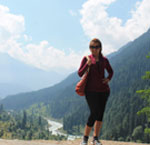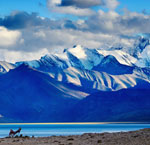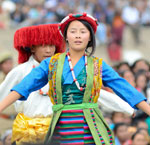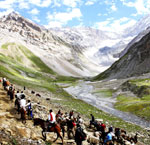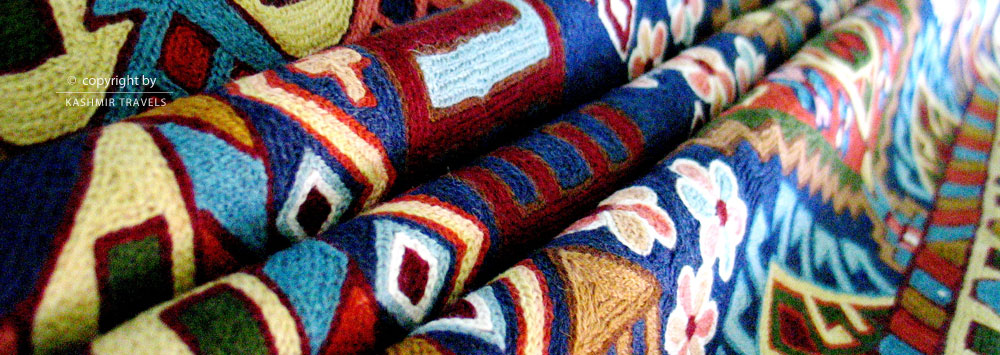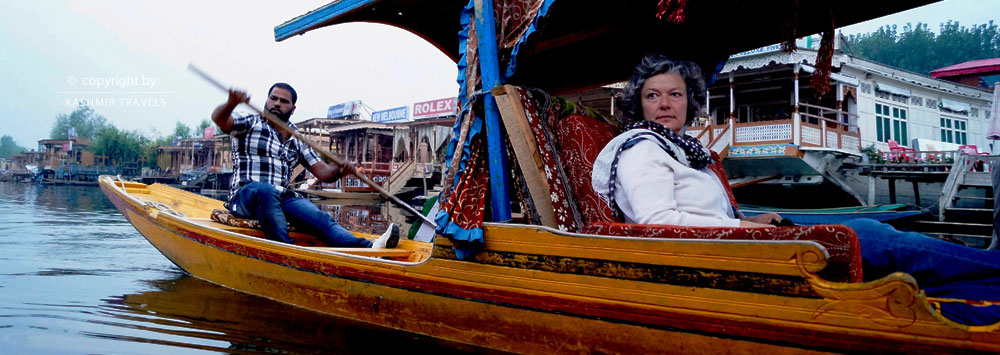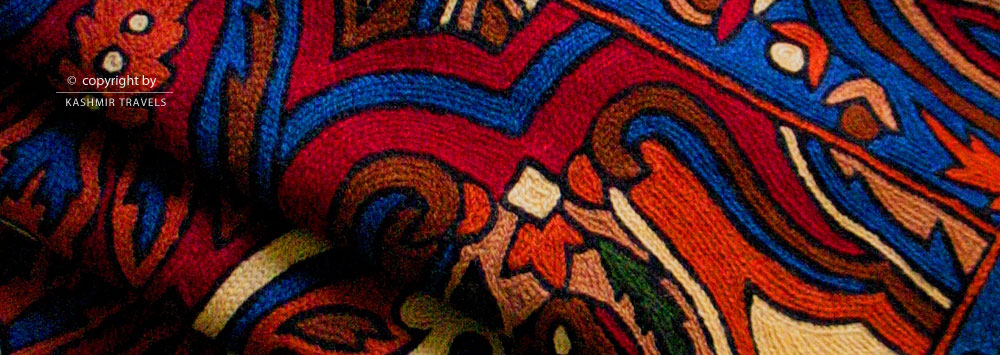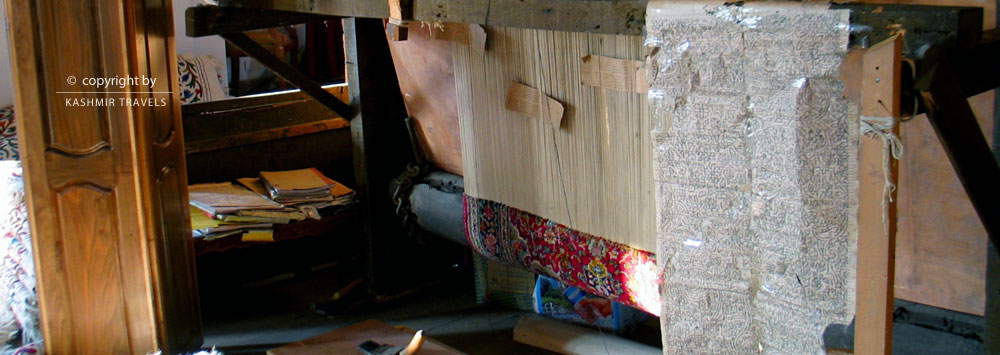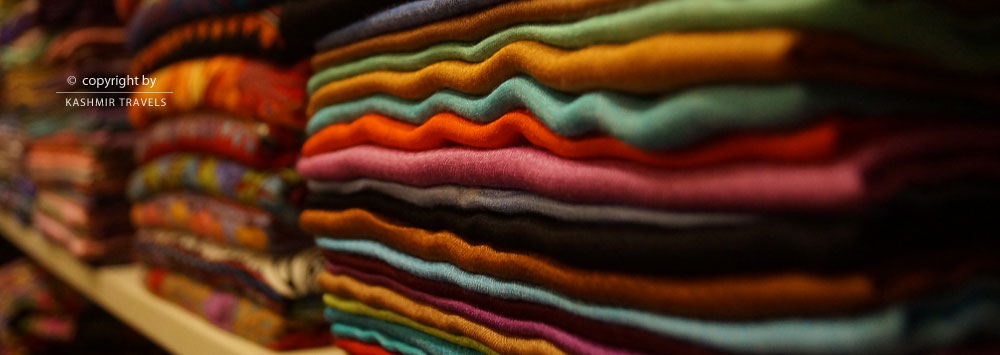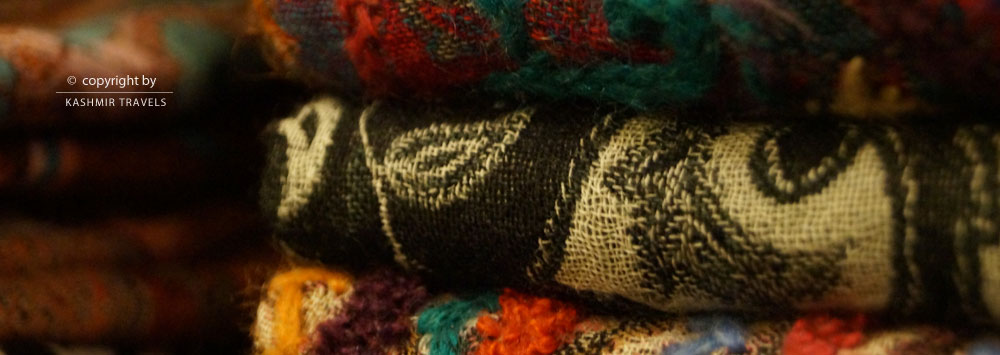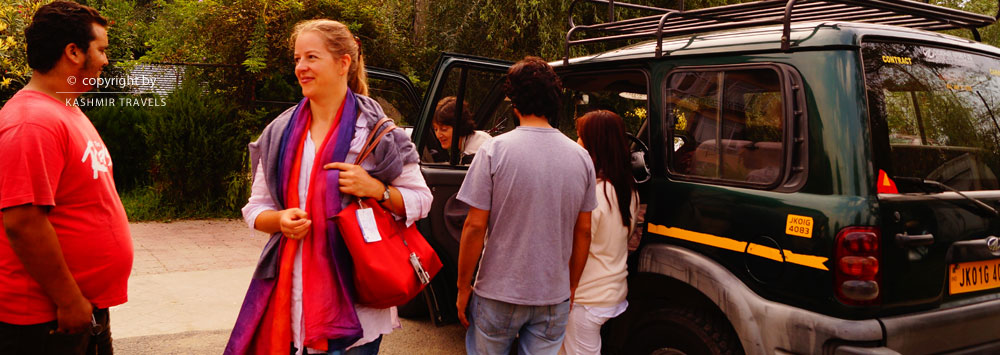POETRY AND LITERATURE
THE LITERATURE OF KASHMIR:
The literature of Kashmir consists of a rich and varied tradition of poetry, prose, and drama. Kashmiri literature has been influenced by the Persian, Sanskrit, and English literary traditions. The region has a rich history and culture, which is reflected in its literature. Kashmiri literature in languages other than Kashmiri including Sanskit dates back more than 2,500 years. But the original writing in Kashmiri dates back to 750 years. Nowadays, we have authors and poets writing in Kashmiri, Urdu, English, and Persian languages.
ANCIENT LITERATURE:
In Kashmir, a wealth of Sanskrit literature was created, notably Kalahana's Rajatarangini, which is arguably the best and most scholarly work of history that ancient India has ever seen. However, excellent literature in the valley wasn't just found in the classical age or even in Sanskrit. A fresh and lovely literature flourished as the Kashmiri language developed. The two major spiritual currents that flowed through Kashmir at the time—Shaivism and Sufism—provided the first inspiration for this literature.
Early authors include Patanjali, who wrote the Mahbhya commentary on Panini's grammar and is also the author of the Yogasutra, a Hindu treatise. Three poets, Sheikh Noor-ud-Din, Lalla Ded, and Shiti Kanth, are credited with starting this literature. The first recorded literary use of Kashmiri is in Kalhana's Rajatarangini (12th century AD), where a three-word Kashmiri term called Apabhramsa is employed. However, the Mahanaya Prakash of Shitikantha Acharya, which dates from 1200–1500 AD, appears to be the first composition in Kashmiri. Mahayana Prakash was written in the twelfth century. Its structure comprises 94 vakhs, each of which is followed by a Sanskrit translation and explanation.Chumma-sampradaya, a work of uncertain age consisting of 74 verses, also appears to be amongst the oldest specimens in Kashmir.
The greatest Kashmiri poet ever was Lal Ded. She has had a monumental impact on Kashmiri literature. The poet Lalleshvari or Lal Ded's mystical lines in the vaakh or four-line couplet style from the 14th century marked the beginning of the use of the Kashmiri language. Her Vaakhs were dedicated to Lord Shiva while also challenging several religious dogmas. Although she was a devotee of Shiva, her poems had a significant impact on people of many faiths. Many Sufis were influenced by her, including Sheikh Noor-ud-Din-Wali, who was her contemporary. His lyrics are still recited in Kashmir today by both Hindus and Muslims on festivals and special occasions, demonstrating how his poetry not only influenced spiritual philosophy but also common culture.
The book Nurnama or Rshinama contains the sayings or shrukhs of Sheikh Nuruddin. The literary tradition of the Kashmiri language was made possible by these two pioneers. Modern litterateurs have emerged to update this legacy with contemporary concepts and topics.
The wife of the Mughal Emperor Yousuf Shah Chak, Habba Khatoon, was another rhetorical poetess who sang her own verse.
The Kashmiri words for Vaakya and Shloka in Sanskrit are Vaakh and Shrukh. The two genres with different names have very little structural variation. They're both four-lined. The subjects they cover differ, though. Lal Ded's Vaakhs illustrate linguistic change in the 14th century. Her Vaakhs signify the beginning of the contemporary Kashmiri tongue. Her poetry enriches the Kashmiri language's beauty of expression by adding numerous idioms and phrases as well as intellectual ideas. She created a contemporary Kashmiri. Her Vaakhs are regarded as a remarkable literary treasure by both the general reader and critics because of their innate communication abilities. Her Vaakhs are characterised by a depth of meaning, imagery, non-didactic nature, and internal poetic conflict or auto-drama. Shrukh is exhortative in tone and instructive in content. It serves as a platform for Sheikh's teachings. Bhatavatar, and Sukhadukhacharitam of Ganaka Prashasta, although they did not attract much attention.
In Kashmiri, Banasuravadha is regarded as the first epic poem ever written. Some claim that Paishachi of Kashmiri writer Nag San, a Buddhist scholar from Kashmir, penned the Brihat Katha of Gunadhya and the Milind Panha in Kashmiri around 150 BC (Dardic group). Many well-known academics and poets were born in Kashmir, including one of the best poets, Kalidasa. Kashmir also gave birth to pre-Islamic poets like Bilhana and the Sanskrit-writing polymath Kshemendra. Kalhana, a renowned historian and the creator of Raj Tarangni, who initially referred to himself as a poet and afterwards as a prose writer, was born in Kashmir.
After the death of Budshah or Shahi Shah (Zain-ul-Abideen), who held the throne from 1420 to 1470 AD,no major Kashmiri literature was produced beyond that time, except for Gana Prashast's Swokh Dwokh Tsareth, which was written in the Baanasura katha style. It is because he was one of Kashmir's finest monarchs, a genius who valued cultural tradition and went above and beyond to protect it. He valued scholars, poets, and painters and was a lover of the highest cultural ideals. His sponsorship gave new vitality to almost all the beautiful arts.
He was a poet himself and wrote in Kashmiri and Persian. Folk literature, on the other hand, must have exploded in popularity during this interim time. The AkaNandun and Heemal Naagiraay, among the folktales that persisted, still serve the purpose of amusing people today.
MIDDLE AGES:
SHAIVISM:
During the Middle Ages, the philosophy of Shaivism was adopted by Vasugupta , Utpala, Abhinavagupta, Kshemaraja, and Anandavardhana.
PERSIAN:
Many cultural changes occurred after the foundation of Muslim dominance in the 14th century. The most noticeable changes, though, were linguistic. Sanskrit was being replaced by Persian, which was developing quickly. The Kashmiri Pandits acquired Persian at Bud Shah's request, and most of them became Karkuns, or members of the service class. From the fourteenth to the seventeenth centuries, Kashmir produced some of the best Persian literature. Prominent Kashmiri authors who wrote in Persian include Gani, Sarfi, Salim, and Fani. The Persian language and culture of this region flourished in Kashmir as a result of which it gained the moniker "Iran-e-Sagheer'' (Little Iran).
VATSUN:
In this period, the key Kashmiri poetry genres of Vatsun and Masnavi were created and expanded upon to a greater extent during this time, as the Kashmiri language evolved extremely quickly. As a result, this time period is also known as the Vatsun and Masnavi periods. Habba Khaatoon was the first well-known Vatsun author. Her Vatsuns are overflowing with her innermost feelings of love and pain. The other two poets in this category are Khawaja Habib Ullah Nowsheri and Mirza Akmal-ud-din Badakshi Another outstanding poetess in the Vatsun tradition is Arnimaal. Kashmiri literature experienced a significant development from 1500 to 1800 AD.
In the reign of Jehangir, the Hindu poet Sahib Kaul produced the works Krishnaavatara and Jananmcharita. The epic of Lord Rama that Prakasarama derived from the Ramayana is known as the Ramavataracharita, and it was followed by the Lava Kusa Charita.
An important mystic poet, Sochaa Kraal held to the Wahadat-ul-Wajood ideology, which states that God and man are not qualitatively and fundamentally distinct from one another.
MASNAVI (THE SPIRITUAL COUPLETS):
A new poetic form known as Masnavi was created as a result of the Persian language's extensive influences. Masnavi is a type of long narrative poetry that is divided into four sections: Bazmia (Romantic), Razmia (Depicting Bravery and Battle), Mazhabi (Religious), and Hazlia (Satiric).Undoubtedly, a number of regional legends, such as Heemaal Naagi Raay, Aka nandun, and the Hindu epics, are included in the Masnavi Contents, but the majority of Kashmiri Masnavis are faithful translations or adaptations of Persian Masnavi. Sheereen Khusro, Laila Majnun, Yusuf Zuleikha, Sheikh Mansoor, Sheikh Sanaan, and Pahalynaama are just a few of the Masnavi that Mahmood Gaami authored. Yusuf Zuleikha is his most well-known Masnavi, and it has lovely metre changes and elegant language. It served as a template for those who came after him.
NAAT:
The earliest traces of Hamud(praise to God) are found in the writings of Nund Rishi. Naat was written by Habib-ul-lah Nowshari after roughly 150 years. Later, Fakhir created lovely naats in Kashmiri using straightforward language. Naat was first presented in Vanvun form (a piece of writing meant to be sung in the traditional manner) by Maqbool Shah Kraalawaari, who also gave the genre its heartfelt expression.
Leela:
The genre of Leela(song with instrumental accompaniment ) can be credited to Nund Rishi, although Prakash Ram is credited with popularising this style. He included numerous leelas in his Ramavtaar Charit, and the general public preferred these leelas over the epic itself.
MARSIYA (ELEGY):
The technique of Kashmiri classical Marsia (elegy) differs from that of current Marsia, which is influenced by Urdu Marsia. The Kashmiri Marsias are also written to narrate the story of Imam Hussain and his companions who were martyred. The five components of the traditional Marsia are Barkhast, Dunbaale, Gath, Krakh, and Nishast. These are the Marsias that are sung during the Muharram mourning rituals. The first Marsia in Vatsun form was written by Shyam Bibi. It was written following Nund Rish's departure from the world.
MODERN ERA:
GHAZAL AND NAZM:
The two forms of Kashmiri poetry that emerged in the modern era(1819 onwards) are the ghazal and the nazam. The growing influence of Persian music led to the adoption of ghazals in Kashmiri. Ghazals, masnavis, and Geets—creative marvels of mystical and secular poetry—were written in the first few decades of the 20th century. Abdul Wahab Pare translated Firdausi's Shahnama into Kashmiri by Abdul Wahab Pare (1845–1913), who also translated the Akbarnama.
Lakshman was a prominent poet from the same era. Lakshman Ju wrote several ghazals and brief poems in Kashmiri, including Nala-Damayanti. Maulavi Siddiqullah translated the Sikandarnama of the 12th-century poet Nizami into Kashmiri. It is important to note that during this time, K.F. Burkhard and G.A. Grierson were the two European academics who promoted Kashmiri literature. Sivaparinaya by Krishna Razdan, Krishnavataralila by Dinanath, Himal Ta Nagaraya by Waliullah Mattu, Gazliyat-i-Haqqani by Azizullah Haqqani, and Akhnandana by Ramzan Bath are also important works from this period.
The first poet to adopt the ghazal form with free-flowing Persian words was Mahmood Gaami. Mahjoor was a great admirer of beauty, and his ghazals are characterised primarily by their love of all kinds of beauty. He used a traditional technique to make his songs representative of his emotions. He was able to sense the tempo of the moment. He encouraged political and social transformation among the Kashmiri people. Tagore called Mahjoor "the Wordsworth of Kashmiri poetry."
The Bhagwad Gita was translated into Kashmiri by Pandit Narayan Khar, and this marked a turning point for Kashmiri literature. Abdul Ahmad Azad, Dinanath Nadim, Amin Kamil, Ghulam Rasul Nazki, Rahman Rahi, Abdul Haqq Barq, and Nur Mohammed Roshan are notable Kashmiri poets from the post-Independence era.
The first Kashmiri Nazam( a type of poetry where only one idea is communicated, without any asides) Gongal Naama, according to some experts, was written by Nunda Ryosh before 1947. Azad and Mahjoor form the foundation of modern Nazam.
THE PROGRESSIVE MOVEMENT:
The Progressive Movement (1948–60) had a similar impact on Kashmiri literature as the Sir Syed Movement did on Urdu Nazam after 1857. A few political, economic, and social changes also contributed to the Nazam's expansion. Karl Marx had an impact on the educated youth of that time. During this time, excellent pieces of poetry were written, including Me Chamm Aash Paguhch by Nadim and Yaarabaluk Sahar by Kamil.
PROSE:
Since no prose works have been discovered, it is difficult to fathom what kind of prose was written before the 19th century. The Serampore Missionaries made the initial effort in 1821 to have the New Testament translated into Kashmiri using the Sharda script.
The same text was reproduced in Persian script in 1884. Geometry was included in the first book printed in Kashmiri, which appeared in 1879. Ishwarakaul's Shabda-amrita, a text on Kashmiri grammar written in Sanskrit by Ishwarakaul, was published in 1898 by the Royal Asiatic Society of Bengal. Kashmiri prose did not take off until Mahjoor and Mirza Arif began to pay attention to it and urged authors to write in Kashmiri.
Folk drama has a long history in Kashmir and has proved to be a source of entertainment for the populace for eons. However, some individuals demonstrated an interest in staging and literal drama. The first to move in this way were Ghulam Nabi Dilsoz, Tara Chand Bismil, and Nand Lal Kaul. The 1962 formation of the Kashmir Theatre Federation included 17 theatre clubs.
The promotion of drama benefited from it. The State Cultural Academy has been hosting theatrical festivals ever since Tagore Hall was built in 1960. Many plays from Europe have been translated into Kashmiri, some of which have even been performed. In Kashmiri, radio drama is a relatively common genre in Kashmir.
Kashmiri authors also took to short stories and novels. However, the readership of Kashmiri novels is not very large. Some of the prominent novels include 1958 Dod Dag by Akhter Mohi-ud-din and 1959 Gati Manz Gash by Amin Kamil.
LITERARY CRITICISM:
Abdul Ahad Azad holds the distinction of being the first Kashmiri-language literary critic and researcher. He conducted extensive research and used critical analysis to write the three volumes of Kashmiri Zabaan aur Shayira. The State Cultural Academy has produced a number of studies on poets and authors from various eras. Scholars such as Mohd. Yusuf Taing, Moti Lal Saqi, Mohd. Amin Kamil, and Rasheed Nazki have provided critical analyses of these collections.
ESSAY:
Mohammad Zamaan Azurdah is considered to be the father of Kashmiri essay writing. He elevated the essay to a separate literary genre in Kashmiri. His two essay collections are Nuna Posh (1986) and Fikar ta Tikar (1980).
OPERA:
The first Kashmiri opera ever written, Bombur ta Yemberzal (Bumblebee and Narcissus), was written by Dinanath Nadim. His poems were adapted into the iconic song "Bhumro bhumro" for the 2000 Bollywood film Mission . In addition to this, he has the distinction of penning Jawabi Card, the first short narrative to be written in Kashmiri.
JOURNALISM:
Kashmiri was first used in print by Prof. J.L. Kaul in the 1936 issue of the S. P. College magazine. Lalla Rukh magazine from Amar Singh College came next. Mahjoor, however, was the one who started the Gaash newspaper but was unable to maintain it.
RESISTANCE LITERATURE:
Basharat Peer, a former journalist who became a writer, established the new literary craze in Kashmir. He describes the atrocities of violence as well as the never-ending misery and suffering of the Kashmir conflict in his memoir, Curfewed Night (2009). The Garden of Solitude (2010) by Siddhartha Gigoo also chronicles the traumatic emigration of Kashmiri Hindus.
CONTEMPORARY:
There are several contemporary authors, including Hari Kishan Kaul, Majrooh Rashid, Rattanlal Shant, Hirdhey Kaul Bharti, Rafiq Raaz, Tariq Shehraz, Shafi Shauq, Showkat Shehri, M.H. Zaffar, G.M. Azad, Anis Hamdani, Barkat Nida. Contemporary poets of the valley include Asif Tariq Bhat and Akeel Mohiuddin Bhat. In publications like "Sheeraza," published by the Jammu & Kashmir Academy of Art, Culture, and Languages; "Anhar," published by the Kashmiri Department of the Kashmir University; and independent publications/portals like "The Kashmir Tales," contemporary Kashmiri literature can be found
Other notable writers of Kashmir include Mahmood Gami, Rasul Mir, Parmanand, Maqbool Kralwari,Shamas Faqir, Samad Mir, Ahad Zargar, and Amin Kamil. Rahman Rahi is the most well-known author of the modern era. His writings have garnered praise on a global scale, and he has won numerous prestigious honours. English is just one of the many languages into which his writings have been translated. Agha Shahid Ali, one of the prominent poets who wrote in English, He has penned down poignant poetry and has strongly advocated for Kashmir .
Sufi poets include Samad Mir, Wahab Khar, Soch Kral, and Shamas Faqir.Dr. Raina claims that Kashmiri literature is poetry-rich since that has historically been the valley's chosen form of artistic expression.

